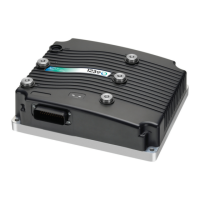Return to TOC Curtis 1239E-1269E Manual, os 37.0 RevA – May 2021
1 — INTRODUCTION
pg. 1
1 — INTRODUCTION
Curtis 1239E and 1269E AC dual-voltage motor controllers provide accurate, dependable, and highly
ecient control of speed and torque of AC induction motors (ACIM).
is family of controllers deliver the smooth power and application exibility that Curtis controllers
are known for, in a true dual-voltage package. The 12V chassis-grounded system matches the
traditional on-road vehicle low power circuits, while the high power, high voltage (traction battery)
system is isolated to ensure a high level of protection against electrical shock. is controller is
specically designed to meet the requirements of on-road applications.
These AC controllers contain two microprocessors, which provide the enhanced diagnostic
functions required to meet modern safety standards. e primary microprocessor runs an advanced
field-oriented AC motor control while simultaneously running VCL software in an embedded
logic controller. e second microprocessor continuously monitors the operation of the system,
redundantly measuring inputs, crosschecking results, and verifying critical timing and operations.
VCL (Vehicle Control Language) is an innovative soware programming language developed by
Curtis. Many electric vehicle functions are uniquely built into the VCL code, and additional functions
can be OEM-controlled using VCL code. VCL opens new avenues of customization, product
dierentiation, and responsiveness to the market.
e CANbus communications included in the 1239E/1269E, as well as in many other Curtis products,
allow this AC induction motor controller to be part of an ecient distributed system. Inputs and
outputs can be optimally shared throughout the system, minimizing wiring and creating integrated
functions that oen reduce the cost of the system.
Figure 1
Curtis 1239E dual-voltage
AC induction motor
controller.

